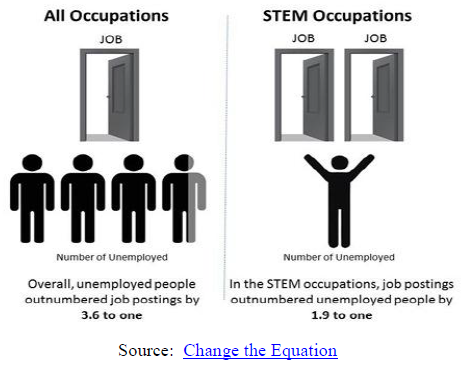Soft Skills for success
What do robots and soft skills have in common in relation to EdTech? The answer, at least to this writer, was "more than I thought!"
I am assuming that anyone reading this post knows what a robot is. But in the absence of a formal definition, let's agree with a paraphrase of Supreme Court Justice Potter Stewart’s famous definition: I know one when I see one.
The definition of "soft skills" may be another matter. I hate to admit it, but until stumbling across the term in an interesting Eschoolnews post the other day, I’d never heard the term before. I went to the Wikipedia and et voilà!! there it was, the definition: “Soft skills are personal attributes that enhance an individual's interactions, job performance and career prospects. Unlike hard skills, which are about a person's skill set and ability to perform a certain type of task or activity, soft skills relate to a person's ability to interact effectively with coworkers and customers and are broadly applicable both in and outside the workplace.” You know, stuff like showing up on time for work and not punching-out the boss when he criticizes you.
- 0 Comments
- Apr 24, 2014 7:00:00 PM
- Posted by Charles Nimrad
- Topics: EdTech, Education, Education Politics
The importance of ensuring America’s continued competitiveness with STEM
The Great Recession began in 2007 and ’by the numbers’ ended in 2009. "By the numbers" meaning "technically". The Misery Index and unemployment have remained high in spite of this technicality. Why is that do you suppose? Is it possible there has been a change in the economy at a fundamental level not responsive to rising housing prices?
Could it be that the workplace itself changed so greatly during this period with the explosion of mobile computing devices like smartphones and tablets that the available jobs no longer reflects the pool of trained, unemployed job seekers? According to Sidharth Oberoi, chief academic officer at Zaniac, that’s the case. He writes, "A closer look at U.S. unemployment statistics shows that even with unemployment still at historically high levels, large numbers of jobs are going unfilled. Most of these jobs have one very important thing in common — the need for STEM education". He says further data suggests that while there are 3.6 applicants for every available job in the US, there is only one unemployed STEM worker for every two available STEM positions.

- 0 Comments
- Apr 4, 2014 11:00:00 AM
- Posted by Mike Nardine
- Topics: EdTech, STEM, Education, Education Politics, 21st Century Classroom
EdTech is introducing a Blended-Learning to Math Classes
"The Times They Are a-Changin" and never more so than now in math class. After struggling futilely for generations to instruct all math students in a classroom at the same rate, today’s math instructors have a viable, technology-aided alternative, blended learning. Blended learning, according to our ubiquitous friends at Wikipedia "is a formal education program in which a student learns at least in part through online delivery of content and instruction with some element of student control over time, place, path or pace."
- 0 Comments
- Feb 24, 2014 10:30:00 AM
- Posted by Mike Nardine
- Topics: Math, Local News, EdTech, Education, Education Politics, 21st Century Classroom, Student Engagement
America Desperately Needs More STEM Students
Here is some interesting information on the future of STEM learning I found in a cool graphic illustration by First Book, a nonprofit social enterprise, that seems to indicate this country is heading for trouble in a few years, trouble brought about by our losing our edge as the world’s most technologically advanced nation.
It is expected that By 2018 there will be at least 8 million jobs in the US dependent on skills learned in STEM learning courses. Problem is, experts estimate that at least 3 million of those jobs will have to go to applicants from outside the US due to a shortage of qualified people here. Worse, the companies needing those workers might take the jobs elsewhere.
Why don’t we have enough qualified applicants in this country to supply our own employment need? We certainly have enough kids in school. In fact, each year over 1 million freshman high school students claim to be interested in a career requiring STEM skills. Unfortunately 60%--six out of ten--change their minds before graduation.
- 0 Comments
- Dec 17, 2013 2:24:13 AM
- Posted by Mike Nardine
- Topics: Math, STEM, Education, Education Politics, Student Engagement
NYC bets on the future by reinforcing STEM focus programs
New York, like many cities large and small in this country, wants to build its own answer to Silicon Valley. Unlike many other cities, New York has really leaned into this initiative.
New York persuaded Facebook and Google to open offices in the city. It worked with local business partners to set up high-tech incubation centers to attract new tech jobs. New York also put lots of money where its mouth is by looking to create a new high-tech institution of higher learning and opening several STEM programs in the city's five boroughs.
In 2011 former mayor Michael Bloomberg, convinced that the city’s once dominant financial sector was too volatile to be a dependable economic engine for the city, pushed the city fathers to ante up free land and $100 million in taxpayer funds to a university or a group of universities willing to build a first-rate engineering or tech campus within the five boroughs. The press came to call this his "genius school" initiative. Several big name universities in the science field including the Massachusetts Institute of Technology and Sanford University entered into what amounted to a competition for the honor of being the "genius school". Cornell University in upstate New York won the competition.
- 0 Comments
- Dec 13, 2013 12:03:19 AM
- Posted by Mike Nardine
- Topics: Local News, STEM, Education, Education Politics, School, Middle School
Business and education leaders urge STEM education, What about you?
It’s pretty much the same everywhere. There are simply too few skilled workers to go around. This is particularly true in the trades and industries depending on skilled workers with a background in science, technology, engineering and math. (STEM)
Provo, Utah is a good example of a technology center that should have no problem recruiting workers. Nestled in the beautiful Utah Valley surrounded by the snow-capped Wasatch Mountains and home to Brigham Young University, it still find itself forced to depend on immigrants to meet the needs of local technology companies. Provo's mayor, John Curtis says "My single biggest impediment to bringing businesses to Provo is that there are not enough qualified workers."
- 0 Comments
- Nov 1, 2013 9:30:00 AM
- Posted by Charles Nimrad
- Topics: STEM, Education Politics
AMERICAN EDUCATION: DOES OUR PRESENT SYSTEM ENDANGER OUR FUTURE PROSPERITY?
- one, students in the US were rated 32nd of 65 nations in math proficiency;
- two, US students ranked 17th in reading proficiency worldwide.
- 0 Comments
- Oct 14, 2013 11:44:00 AM
- Posted by Brendan Barnard
- Topics: Education, Education Politics
OHIO OFFICIALS LAUNCH 'STRAIGHT A' FUND
- 0 Comments
- Sep 30, 2013 1:15:00 PM
- Posted by Brendan Barnard
- Topics: STEM, Education, Education Politics
DON'T MISS THESE STEM LEARNING ORIENTED EDUCATION GRANTS
- 0 Comments
- Sep 19, 2013 3:00:00 PM
- Posted by Brendan Barnard
- Topics: EdTech, STEM, Education, Education Politics
MATH LESSONS IN NEW CURRICULUM
- 0 Comments
- Sep 16, 2013 9:30:00 AM
- Posted by Brendan Barnard
- Topics: EdTech, Education, Education Politics
Relevant Posts
Popular Posts
Subscribe to Email Updates
-
I Want To Learn MoreADDITIONAL INFORMATION




